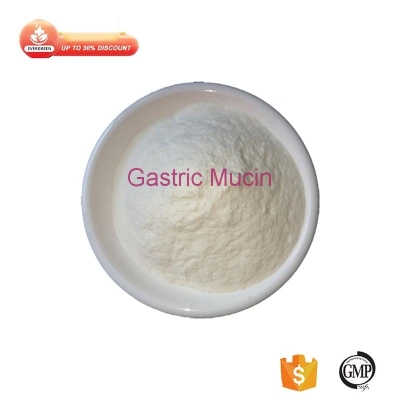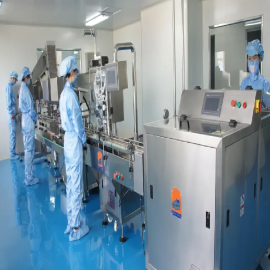-
Categories
-
Pharmaceutical Intermediates
-
Active Pharmaceutical Ingredients
-
Food Additives
- Industrial Coatings
- Agrochemicals
- Dyes and Pigments
- Surfactant
- Flavors and Fragrances
- Chemical Reagents
- Catalyst and Auxiliary
- Natural Products
- Inorganic Chemistry
-
Organic Chemistry
-
Biochemical Engineering
- Analytical Chemistry
- Cosmetic Ingredient
-
Pharmaceutical Intermediates
Promotion
ECHEMI Mall
Wholesale
Weekly Price
Exhibition
News
-
Trade Service
Statins (a class of lowering cholesterol drugs) of the heart blood vessels and mortality benefits, represents one of the major medical breakthroughs of the 20th century
.
Further research on its powerful benefits has led to the discovery of new molecular mechanisms and beneficial clinical effects beyond cardiovascular disease
Cholesterol vascular benefits represent one of the major medical breakthroughs in the 20th century
1.
The mechanism of action of statins: classic and pleiotropic models
In the 1960s, due to research on cholesterol-lowering drugs, Akira Endo discovered statins for the first time
.
The study of Nobel Prize winners Michael Brown and Joseph Goldstein proved the relationship between the inhibition of 3-hydroxy-3-methylglutaryl-CoA reductase by statins and the decrease of low-density lipoprotein (LDL)
In the 1960s, due to research on cholesterol-lowering drugs, Akira Endo discovered statins for the first time
The discovery of new biochemical and clinical benefits has led to the development of a pleiotropic model, which proposes a variety of positive mechanisms of action.
These different mechanisms bring biological plausibility to the observed benefits beyond cardiovascular disease
.
Through the aforementioned extensive changes in Rho kinase signaling and more specific sinusoidal endothelial cells to induce Kruppel-like factor 2 (KLF2), statins have been shown to increase endothelial nitric oxide production in cirrhotic rats and reduce liver Internal resistance, thereby reducing portal hypertension
These different mechanisms bring biological plausibility to the observed benefits beyond cardiovascular disease
2, 2,
Recent studies have shown that statins may have early benefits for certain chronic liver diseases
.
The most reliable data is non-alcoholic steatohepatitis (NASH), in which statins are usually used for dyslipidemia or cardiovascular risk
The prognosis and post-hoc analysis improved in imaging.
It is recommended only when there is a cardiovascular risk
It's different
Evidence to improve portal hypertension
When the hepatic venous pressure gradient (HVPG) drops by 20% or less than 12 mm Hg, the sequelae of portal hypertension show clinical improvement
.
Simvastatin (SMV) can significantly increase human sinus venous pressure within 30 minutes through the above-mentioned KLF2 pathway, thereby increasing liver nitric oxide
.
Similarly, at 1 month, SMV showed an 8.
3% improvement in HVPGWhen the hepatic venous pressure gradient (HVPG) drops by 20% or less than simvastatin (SMV), the above-mentioned KLF2 pathway can be used to significantly increase the sinus venous pressure of the person within 30 minutes, thereby increasing liver nitric oxide
.
Similarly, at 1 month, SMV showed an 8.
3% improvement in HVPG
In 2018, a randomized controlled trial of ATV under the treatment of propranolol showed that the reduction of HVPG exceeded the effect of non-selective β-blockers
.
Despite the intervention group (ATV and propranolol) in 90% of patients reached the HVPG goal, but the trials have not shown rebleeding aspects of statistical or clinical relevance of improvement may be due to sample size limitations (n = 23)
.
4.
Statins are related to slowing down the progression of liver disease and improving clinical outcomes
In 6 retrospective studies of patients without cirrhosis but with chronic liver diseases (including hepatitis B virus (HBV), hepatitis C virus (HCV), ethanol, and non-alcoholic fatty liver disease (NAFLD)), Luo Statins such as Vastatin or ATV are usually associated with decreased progression of liver cirrhosis and decompensation in a dose-dependent manner (Table 1)
.
In patients with compensated cirrhosis, statins are associated with a reduction in the progression and death of decompensated cirrhosis
.
These benefits are closely related to the length of treatment.
Patients with Child-Pugh A/B cirrhosis have a mortality reduction of 8%-9% per year of treatment
.
.
Statins are associated with the progression of decompensated cirrhosis and the reduction of deaths
.
These benefits are closely related to the length of treatment.
The mortality rate of Child-Pugh A/B cirrhosis patients is reduced by 8%-9% per year of treatment
.
Child-Pugh
A retrospective, population-based cohort study of primary sclerosing cholangitis (PSC) patients with inflammatory bowel disease showed that the use of statins was associated with all-cause mortality and reduced death or liver transplantation
.
In the absence of approved PSC treatments , this promising discovery led to clinical trials (ClinicalTrials.
gov: NCT04133792 ).
Unfortunately, only one prospective randomized controlled trial with clinically relevant main outcomes has been completed
.
This 2016 prospective RCT compared the use of SMV and placebo in patients with varicose vein bleeding
.
No reduction in rebleeding was observed (23.
1% vs 20.
3%); however, the benefit of 2-year transplant-free survival was observed (79.
2% vs.
89.
4%)
.
Currently, there are multiple clinical trials recruiting in Europe, North America and South America to further solve the problem of clinical benefit
.
Currently, there are multiple clinical trials recruiting in Europe, North America and South America to further solve the problem of clinical benefit
.
5.
Retrospective data show that statins can reduce the incidence of hepatocellular carcinoma
In 2015, liver cancer was the sixth most diagnosed cancer in the world, with 854,000 newly diagnosed cases; liver cancer was the fourth leading cause of cancer death, with 810,000 deaths
.
Statins have shown evidence of decreased incidence and recurrence rates of various types of cancer
.
Mechanism experiments have shown that chemoprevention is achieved through the inhibition of classic cholesterol synthesis, typical malignant signaling pathways, and extensive changes in a variety of oncogene products that affect inflammation, cell migration, invasion, and angiogenesis (Figure 1)
.
.
The mechanism is achieved by the extensive changes in typical malignant signal pathways and various oncogene products that affect inflammation, cell migration, invasion, and angiogenesis (Figure 1)
.
More than 20 retrospective analyses have shown that statins are associated with a lower incidence of hepatocellular carcinoma (HCC) in various liver diseases (Table 2)
.
This has been the most extensively studied in viral hepatitis populations in Asia, North America, and Europe
.
Small-scale studies of diabetes or NAFLD also show that patients taking statins have a lower incidence of HCC
.
Interestingly, among patients with HCC who have undergone resection or transplantation, patients taking statins have a lower frequency of HCC recurrence
.
.
This has been the most extensively studied in viral hepatitis populations in Asia, North America, and Europe
.
Small-scale studies of diabetes or NAFLD also show that patients taking statins have a lower incidence of HCC
.
diabetes
Unfortunately, there are currently no prospective trials on the prevention of HCC with statin chemotherapy
.
A retrospective analysis of the incidence of cancer in the prospective prevention of coronary atherosclerosis trial.
It was originally designed to assess the cardiovascular events of 263 patients ( 179 cases took statins ), limited by the low incidence of cancer (17 cases), only 1 Cases of HCC
.
In the PRODIGE-11 trial for patients with hepatocellular carcinoma, pravastatin had no clinical benefit
.
.
It is worth noting that the lack of benefit of pravastatin can be explained by its hydrophilicity
.
Although no specific statin has shown consistent benefits in all-cause mortality or cirrhosis progression compared with other statins, multiple recent retrospective analyses have found that the benefits of reducing HCC are limited to lipophilicity Statins
.
These new findings are supported by previous in vitro studies, which show that the lipophilic statin drugs fluvastatin and SMV inhibit cell cycle progression and shift the balance from anti-apoptotic Bcl-2 to pro-apoptotic Bax
.
.
It has shown that compared with other statins, it has consistent benefits in all-cause mortality or cirrhosis progression, but a number of recent retrospective analyses have found that the benefits of reducing HCC are limited to lipophilic statins
.
Supported by previous in vitro studies and tilted the balance from anti-apoptotic Bcl-2 to pro-apoptotic Bax
.
6.
Monitoring of potential risks and recommendations
Prospective trials not only need to evaluate the efficacy of statins in chronic liver disease, but also need to study the pharmacokinetics and adverse reactions in these unique populations
.
A recent meta-analysis showed that the number of diabetic patients increased slightly, but it was statistically significant.
In one study, 225 patients (over 4 years) needed to be injured ; in another study, the incidence rate was 2.
2% (2 years).
)
.
If statins induce diabetes in patients with diseases such as NASH, the expected benefits may be offset
.
2% (2 years).
In another study, the incidence rate was 2.
2% (2 years)
.
Care must be taken when considering statin therapy decompensated cirrhosis, especially in Child-Pugh C grade
.
As liver function worsens, the risk of myopathy and rhabdomyolysis increases
.
Although myalgia is common (5%-10%), true myositis (>0.
9%) and rhabdomyolysis (>0.
2%) are rare in patients without liver disease, mostly secondary to dose and drug interactions
.
In advanced liver cirrhosis, the incidence of rhabdomyolysis in patients treated with SMV (40mg/d) is higher than expected
.
If statins are prescribed for these patients, routine serum creatine kinase screening is required for close monitoring
.
.
The incidence of rhabdomyolysis in patients treated with SMV (40mg/d) is higher than expected from screening
Here, we review the encouraging pre-clinical, retrospective and prospective clinical data of statins as chemopreventive therapy to slow the progression of liver disease and liver cancer
.
Although promising, we currently lack a large amount of prospective data to change the guidelines for the use of statins in chronic liver disease
.
Fortunately, multiple clinical trials are currently being recruited and can provide the required evidence
.
.
Guidelines for multiple clinical trials are currently being recruited,
It is essential that if statins have other indications of cardiovascular risk, then statins are safe for chronic liver disease
.
We must continue to spread the importance of statins for NASH and high cardiovascular risk patients, although liver problems are largely unfounded
.
As data continues to emerge, statins may prove to be beneficial for many causes and stages of liver disease
.
.
Statins may prove beneficial for many causes and stages of liver disease
.
Original source:
Prashanth Francis , et al.
Statins Show Promise Against Progression of Liver Disease
Clin Liver Dis (Hoboken).
Published Online 2021 On Dec 20.
A DOI: 10.
1002 / cld.
1143 10.
1002 / cld.
1143 in this message







